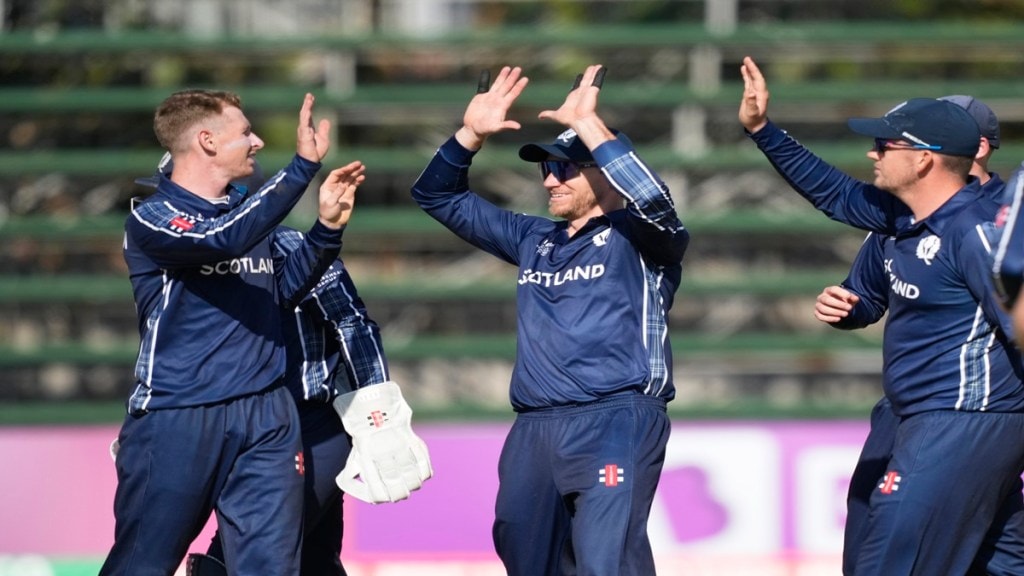By Tushar Bhaduri
The itinerary for the ICC 50-over World Cup was announced barely 100 days before the event, a far cry from the previous two editions in Australia and New Zealand (2015) and the UK (2019) when the schedule was known a year before the tournament.
The concerns of the travelling fans, most of them from overseas who have to plan their trips well in advance with tickets, accommodation and expenses to be taken care of, may not be at the forefront of the mind of those finalising the nitty-gritties of such a big event, but the push and pulls seen in India are at another level when it comes to distributing high-profile games.
Also read: Ringside view by Tushar Bhaduri: In golf and cricket, survival of the richest
Already there is angst about Mohali and Kerala not getting games in the tournament proper (Thiruvananthapuram will host warm-up matches). Mohali was the stage for the India-Pakistan semifinal of the 2011 tournament with a lot of fans from across the border taking advantage of the proximity to be in attendance. Several dignitaries from both countries were also present. Nagpur which staged a high-scoring India-South Africa match is also off the schedule, while centres like Jaipur and Kanpur which have hosted World Cup games in the past are missing from the programme.
Undoubtedly, the emergence of Ahmedabad as the de facto capital of Indian cricket has complicated matters. The largest cricket stadium in the world will host five matches, including the tournament opener and the final as well as the India-Pakistan and England-Australia encounters. The evolving power equations within the Board of Control for Cricket in India (BCCI) are responsible for such shifts. There was a time when Kolkata, Mumbai and Nagpur were power centres in Indian cricket. Eden Gardens and Wankhede Stadium hosted World Cup finals in the past, the distinction that has passed on to the stadium named after the incumbent prime minister.
It may be the World Cup, but the most sought-after games would be the ones featuring India. That has necessitated the home team travelling the length and breadth of the country during the tournament. Their nine league games will be held at nine different venues, with Hyderabad the only host city to miss out. The centres hosting Pakistan is another sensitive topic. Mumbai was out of the reckoning due to what had happened in the past (the Wankhede pitch was vandalised before an India-Pakistan game in the 1990s and political parties in the state have often voiced their opposition to hosting the team from across the border). The north of the country was also not feasible for political reasons. That left Kolkata and the south of the country, apart from Ahmedabad for obvious reasons. That has resulted in Pakistan having to travel the least during the tournament.
Getting house in order
Now that the various centres have been allotted matches, the stadiums are racing against time to get refurbished and renovated before the big event. Indian stadiums are not known to be too spectator-friendly with seating, shade, toilets and ticketing facilities often leaving much to be desired. With thousands of fans expected from overseas, the BCCI will be keen to project the best possible image of the country and the stadiums. Having delayed the announcement of the final itinerary, the Board has to ensure that the time taken was worth it.
Also read: Ringside view by Tushar Bhaduri: Divided by loyalties, united by Dhoni
Infrastructure like floodlights, drainage facilities, dressing rooms, media, VIP and corporate boxes have to be improved at most centres. At venues such as Dharamsala and Mumbai, the whole outfield needed to be re-laid.
Another facet that needs to be looked into is spectator- convenience, the ease with which the fans get in and out of the stadium. There are a lot of restrictions on what they can bring with them to the ground – basic items like keys and coins are often not allowed inside, while some banners and even black clothing are often frowned upon by over-sensitive security personnel.
With all but six of the 48 matches being day-night encounters, getting home from a late finish is often a hassle, especially for spectators who don’t come by a vehicle of their own. Some of the venues are at quite a distance from the main city and getting conveyance at a reasonable fare becomes a problem. This is where a robust public transport network comes in handy.
An event of this magnitude needs all stakeholders pulling in one direction. While for the casual fan, the success or otherwise of the tournament will largely be dictated by whether the home team repeats the success of 2011, its legacy will be decided by various factors off the field too.
The 50-over format has been said to be facing an existential crisis over the last few years, squeezed between Tests and T20 cricket. The number of ODIs between top teams has gone down of late, and even those games have struggled for context. An Indian triumph is a sure-shot way of giving it a fresh lease of life.
However, if the World Cup provides some memorable nail-biting encounters, culminating in something close to the 2019 final, it will be well worthwhile. The atmosphere and passion for the game in India are unparalleled, and if the action on the field and the organisational aspect on and off the field rise to the occasion, it will be a win-win situation for everyone.

